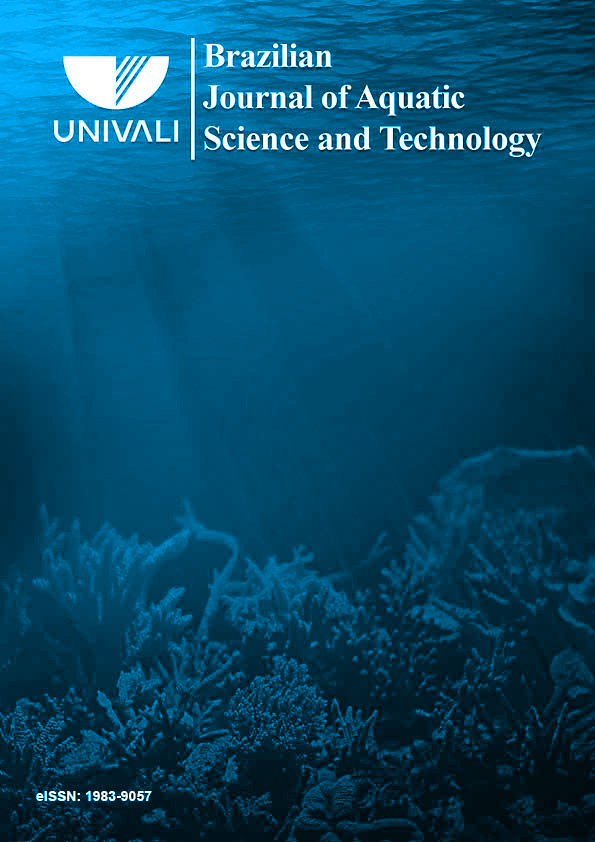MICRONUCLEUS AND CHROMOSOME ABERRATION FREQUENCIES IN ALLIUM CEPA CELLS EXPOSED TO COASTAL SEDIMENTS FROM A POLLUTED ESTUARINE SYSTEM
DOI:
https://doi.org/10.14210/bjast.v25n1.16461Resumo
The genotoxicity and mutagenicity of two compartments of sediment samples (pore water and whole sediment) were evaluated using the Allium cepa assay. The samples were collected from thirteen sites on the southern coastal strip of the Rio de la Plata (Argentina). Three biological parameters were analyzed in the root cells, the mitotic index (MI), and the chromosome aberrations (CA) and micronuclei (MN) frequencies. Most of the samples were genotoxic in the pore water compartment, probably due to the mixture of bioavailable heavy metal concentrations (Cd = 0.050 to 0.950 mg/Kg, Cu= 0.125 to 7.300 mg/Kg, Cr = 0.019 to 1.850 mg/Kg, Pb = 1.075 to 15.200 mg/Kg, and Zn = 0.925 to 47.225 mg/Kg). However, half of the samples exerted genotoxic and
mutagenic effects on the meristematic root cells when they were exposed to the whole sediment. This probably means that some contaminants in this compartment, such as heavy metals, would not be bioavailable in all of the samples. In conclusion, the A. cepa assay showed high sensitivity in detecting genotoxicity and mutagenicity in sediment samples from the southern coastal strip of the Rio de la Plata.
Downloads
Publicado
Edição
Seção
Licença
Autores que publicam nesta revista concordam com os seguintes termos:
- Os Autores mantém os direitos autorais e concedem à revista o direito de primeira publicação, com o trabalho simultaneamente licenciado sob a Creative Commons Attribution License que permitindo o compartilhamento do trabalho com reconhecimento da autoria do trabalho e publicação inicial nesta revista.
- Autores têm autorização para assumir contratos adicionais separadamente, para distribuição não-exclusiva da versão do trabalho publicada nesta revista (ex.: publicar em repositório institucional ou como capítulo de livro), com reconhecimento de autoria e publicação inicial nesta revista.
- Autores têm permissão e são estimulados a publicar e distribuir seu trabalho online (ex.: em repositórios institucionais ou na sua página pessoal) a qualquer ponto antes ou durante o processo editorial, já que isso pode gerar alterações produtivas, bem como aumentar o impacto e a citação do trabalho publicado.

